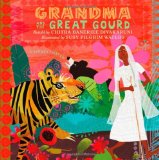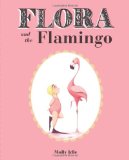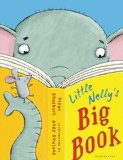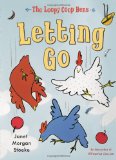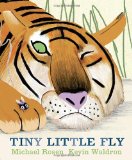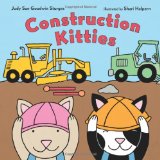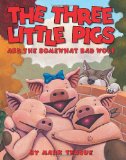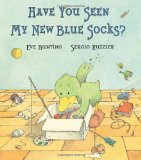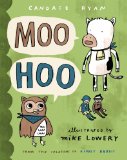Review of Grandma and the Great Gourd, by Chitra Banerjee Divakaruni and Susy Pilgrim Waters
A Bengali Folktale
retold by Chitra Banerjee Divakaruni
illustrated by Susy Pilgrim Waters
A Neal Porter Book, Roaring Brook Press, New York, 2013. 32 pages.
Starred Review
Here’s a wonderful folktale, marvelously told. The pictures are exquisite, giving the flavor of India. The story is sprinkled with sound effects that aren’t ones native English speakers would naturally use. There’s the repetition of a folktale, and a lovely predictability — with a twist.
This is a book for school age kids, with the text on the long side for preschoolers. With that in mind, the telling is sure to engage their interest.
Here’s how it begins:
Once upon a time, in a little village in India, there lived an old woman whom everyone called Grandma. She loved gardening and had the best vegetable patch in the village.
Grandma lived by herself in a little hut at the edge of the village, next to a deep, dark jungle. At times she could hear herds of elephants lumbering on forest paths, thup-thup-thup, or giant lizards slithering over dry leaves, khash-khash.
She didn’t mind because she had two loyal dogs, Kalu and Bhulu, to protect her. They also helped her with garden chores.
When Grandma crosses the deep, dark forest to visit her daughter, she encounters three fierce animals who want to eat her up. But this is how that goes:
Grandma’s heart went dhip-dhip, but she didn’t let the fox see how scared she was.
“If you’re planning to have me for breakfast,” she said, “that’s a terrible idea. See how skinny I am? I’ll be a lot plumper on my way back from my daughter’s house because she’s such a good cook. You can eat me then, if you like.”
“That sounds good!” said the fox, and he let her go.
Of course, to get home after visiting her daughter, and indeed growing plump, Grandma must outwit the tiger, the bear, and the fox. Her plan works on the tiger and the bear, but the fox is more clever and confronts her. However, there’s a lovely satisfying ending, for which the groundwork was laid at the very start.
This has all that’s good about a folktale, including being one you’ll want to tell again and again.
Find this review on Sonderbooks at: www.sonderbooks.com/Picture_Books/grandma_and_the_great_gourd.html
Disclosure: I am an Amazon Affiliate, and will earn a small percentage if you order a book on Amazon after clicking through from my site.
Source: This review is based on a library book from Fairfax County Public Library.
Disclaimer: I am a professional librarian, but I maintain my website and blogs on my own time. The views expressed are solely my own, and in no way represent the official views of my employer or of any committee or group of which I am part.
